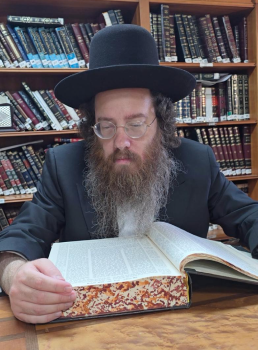Synagogue Design
Question
Answer
Shalom!
Thank you for your question.
There is indeed much symbolism to the architecture of the synagogue.
For example:
1. The bima in the synagogue represents and corresponds to the Mizbei’ach, the altar of the Mishkan. Just as the Mizbei’ach was in the center of the Mishkan, so too, the bima is placed in the center of the synagogue. Placing the bima in the center of the sanctuary also makes it easier for everyone in the congregation to hear the Torah reading.
2. On that note, there are various customs as to how many steps there should be leading up to the bima . The more prominent customs are to have one, two, three, four, or six stairs. The most widespread custom, however, is to have three. These three stairs correspond to the three stairs of the duchan in the Beit Hamikdash upon which the Kohanim would ascend to bless the people. According to Kabbala, there should not be more than six stairs leading to the bima .
3. The amud , where the chazzan stands to lead the prayers, is intended to symbolize the Mizbei’ach Haketoret, the incense altar. This is based on the scriptural connection between prayer and incense, as it says, “My prayer shall be established before You like incense.” The amud is generally placed to the right of the aron kodesh .
4. The aron kodesh should always be placed at the front of the sanctuary so the congregation faces it while praying (if it's not possible, then one should contact a Rav to decide where to place it). One of the reasons for this is to us that our prayers must always be directed toward Jerusalem and the “holy of Holies.”
5. The parochet , the covering upon the aron kodesh , serves to recall the parochet that was upon the original aron kodesh that was in the Mishkan and the Beit Hamikdash.
6. The ner tamid , the continually burning flame or light that is usually found above the aron kodesh , represents a number of different things: the Menorah and the fact that the western lamp of the Menora never burned out, the continual fire on the Mizbei’ach that never burned out, and to remind us of God’s continual presence in our lives and that He is everywhere at all times.
7. A synagogue must have windows. Ideally, there should be twelve windows, representing the twelve tribes. Some of the windows should face Jerusalem.
It is forbidden to make changes to the traditional arrangement of the synagogue sanctuary. This is especially true if it is being done in order to imitate the non-Jewish culture.
SOURCES: Chatam Sofer , OC 28; Rambam, Hilchot Tefilla 11:3; OC 150 and 151 with commentaries
